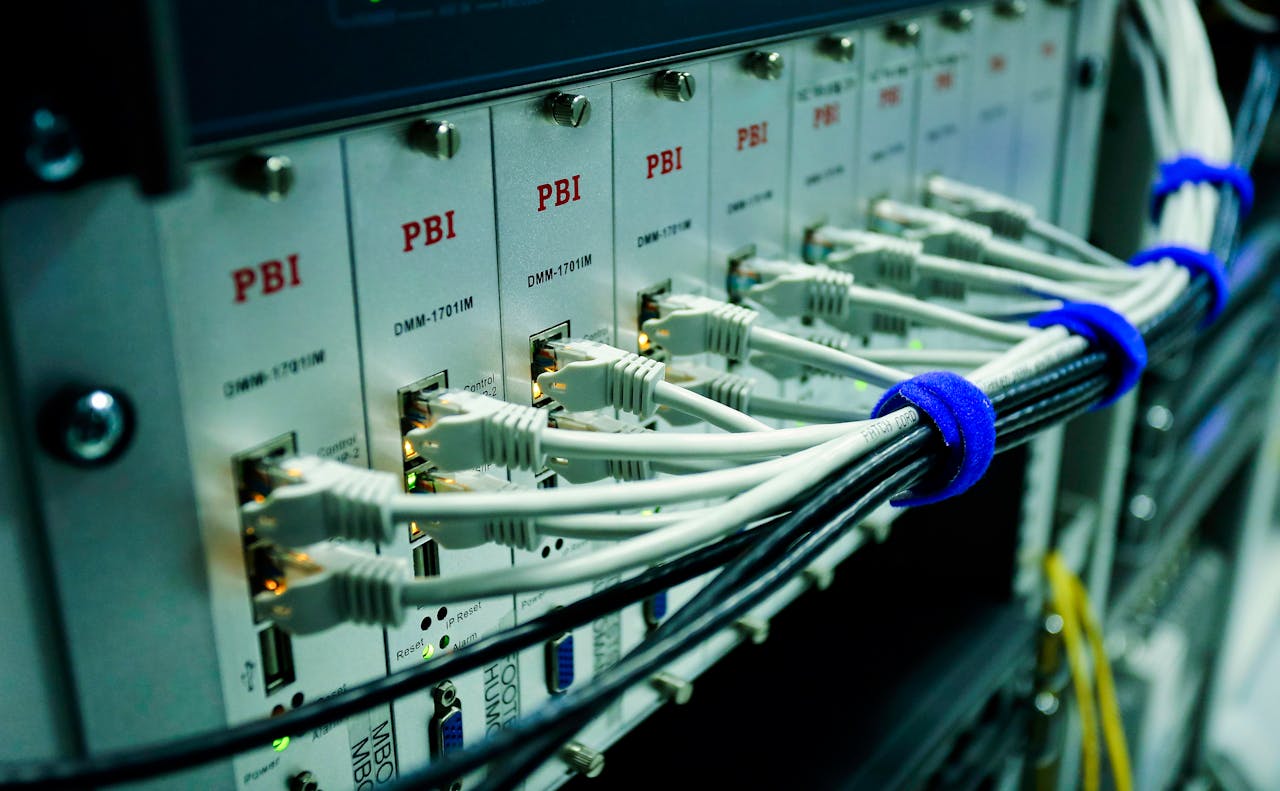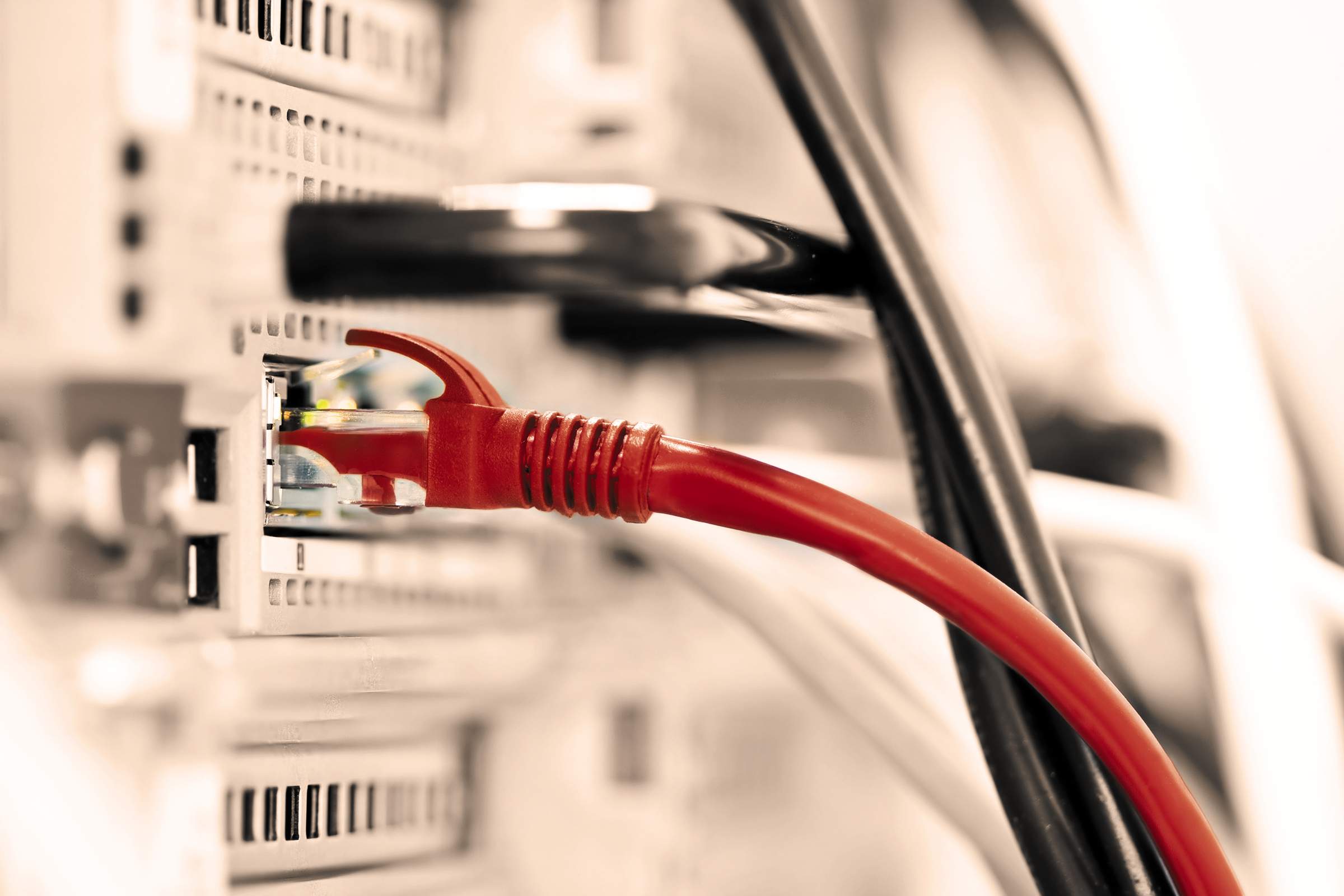How is a Dial-Up Connection Different from a Leased Line Connection
-
April 23, 2024
-
6 min read

When digital technology and the Internet were not as developed as today, users were connected to the online world with a dial-up Internet. A dial-up connection was a legacy system providing internet access to global users with the help of telephone lines.
Users with a computer equipped with a modem would dial the Internet Service Provider (ISP) number, where the modem would then negotiate with the ISP for a connection. After a successful negotiation, the users could join an Internet network using a designated Internet protocol (IP) address. India saw the last of its dial-up internet access in March 2021 by BSNL, after which, the technology was completely replaced by a leased line connection including MPLS, fibre-optic, and Ethernet.
Speed and Bandwidth Comparison Between Dial-up and ILL
As mentioned before, Dial-up internet is a legacy technology that leveraged traditional telephone lines to connect users to the internet through computer modems. It used the Public Switched Telephone Network (PSTN) via the ISP numbers to establish contact with Internet providers.
On the other hand, an Internet leased line (ILL) is a unique telecommunication network leased or rented to a business, providing an uninterrupted Internet connection by a selected service provider. Unlike dial-up internet access, leased lines offer a direct connection without having to negotiate with any other medium.
To understand the advantages and limitations of each of these network technologies, outlined below is a table of comparison based on their speed and bandwidth components:
| Component | Dial-up Connection | Internet Leased Line Connection |
| Speed | Being a legacy technology, this connection offers a maximum speed of about 56 Kbps. However, some modems may be able to reach a value of 320 Kbps with the right implementation and settings. | Comparatively, ILL usually offers a speed of 2 Mbps and can increase it if required. Based on business requirements, this speed can be either higher or slightly lower. |
| Bandwidth | Due to its analogue transmission, it offers limited bandwidth, ideal for basic internet browsing such as web surfing and going through text-based websites or emails. | Due to modern technology and demands, ILL provides reliable and consistent bandwidth for every dedicated network. It can easily manage large file transfers, stream uninterrupted videos, and handle all types of data-intensive applications. |
Reliability and Stability Comparison Between Dial-up and ILL
To ensure businesses remain relevant in an evolving environment, reliable and stable network services are non-negotiable components. Although the Dial-up connection paved the way for modern networking, compared to today’s increasing technical development, it lacks severely in business requirements. As of 2022, the telecommunication market has a subscriber base of over 1.1 billion, proving the significant role of networking services in business endeavours.
Modern leased lines not only offer adaptable features that are critical for applications to run smoothly but they also provide a faster way to exchange data from one source to another. As they operate in a safe and secure mode, they also ensure all sensitive data are handled carefully.
To understand the contrasting difference between a Dial-up and ILL connection in terms of their reliability and stability, refer to the table below:
| Network Type | Key Considerations | Details |
| Dial-up Connection | Key Issues | Dropped connections are relatively more frequent in Dial-up internet connections due to high interferences and poor line quality in most areas. This can disrupt the smooth operations of ongoing tasks like downloading files and accessing web pages, causing users to stop and reconnect to the internet to finish their tasks. |
| Due to the usage of telephone lines to secure a connection with the internet provider, these connections usually face a lot of line noise. This can significantly lower the signal quality, resulting in unstable speed, higher latency, and slower exchange of data. | ||
| A Dial-up connection can be easily subjected to unavailability due to their dependency on telephone lines. Issues relatively arise because of unknown calls in the middle of an ongoing transfer or lack of modems, which can trigger a serious disruption. | ||
| ILL Connection | Key Benefits | Unlike the former connection, leased lines offer a dedicated connection that can accessed exclusively by the leasing company or user. This allows an uninterrupted flow of data with better performance and connectivity. |
| Leased lines offer SLAs that guarantee all required commitments towards the company’s requirements will be fulfilled satisfactorily. This can include consistent connectivity, reducing downtime, managing all network communication, and more. | ||
| Leased lines provide a balanced bandwidth, where the upload and download speeds are equivalent. This ensures that all operations always deliver optimal performances in both upstream and downstream data traffic, without fail. |
Cost and Accessibility Comparison Between Dial-up and ILL
Despite its low stability, rural areas still rely on dial-up internet access due to their widespread accessibility through telephone lines. Since leased lines are limited to more digital spaces and infrastructure, users residing in remote and rural populations depend on dial-up’s inferior quality of services. Based on the user’s nearest ISP and geographical visibility, the signal strength may fluctuate up and down.
Whether businesses wish for a consistent network that comes at an expensive margin or settle for a slow-paced connection that will provide accessibility to remote areas – Outlined below are some key aspects offered by each network type based on their cost and accessibility.
Companies can make their final decision based on these points:
Dial-up Connection
- Installation requires a traditional telephone line for connection.
- Users will be charged monthly for the maintenance of the telephone line. This will be added to the overall cost of usage.
- The cost will increase depending on the user’s needs. If more than one line is required, the cost will increase.
- Users can be charged based on the amount of time they spend using the service. This is called a pay-per-minute model.
- Due to the difference in usability, monthly charges may vary.
ILL Connection
- Installation charges come with additional set-up charges for the physical lines, which may add to the overall cost.
- Professional technicians are required for proper installation who will charge another service fee.
- Users will receive a fixed monthly bill.
- The charge will be comparatively expensive but will provide all the requirements.
How to Choose Between Dial-up and ILL Connection
As the use of mobile data increases, users are gradually moving away from slower networking systems like dial-up internet access and looking to invest more in broadband technologies. Providing stable and reliable connections, leased lines are an ideal choice for businesses looking to expand their telecommunication operations.
However, to make this choice fair, here are some additional factors that companies must go through based on their networking goals:
- Scalability towards the evolving technical advancements
- Security measures involving encryption that provide secure and private lines
- Use cases that can satisfy all industrial or individual needs.
Conclusion
To put it briefly, the future of communication is leaning towards the robust success of Internet connectivity which has rising potential to shape how businesses will expand their contact strategies. While dial-up connections become obsolete with the birth of modern technologies, a leased line connection is becoming a critical investment.
Embracing faster speed and seamless data transfer with modern developments surrounding IoT, cloud computing, and AI will help businesses stay prepared for the opportunities that lie ahead.
Wish to learn more? Visit Airtel Business for all things related to connectivity.
 Share
Share









